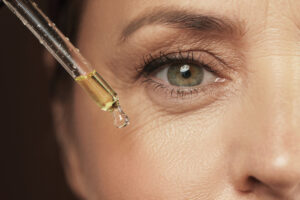Small changes in your lifestyle can help you improve vitamin D levels!
Did you know that, according to various studies, around 42% of Americans are deficient in vitamin D? When was the last time you went for a regular check-up to see if you’re at risk too? Widely known as the “sunshine vitamin,” vitamin D is essential for healthy bones and immunity. The issue with this vitamin is that it isn’t exactly absorbed by our bodies through food, and we may need some lifestyle changes to help boost its levels.
Before getting further into the topic, you must know that there are some common symptoms that people with vitamin D deficiency experience. Among them are mood swings, joint pain, muscle cramps and aches, a constant feeling of fatigue, and tingly sensations in the feet and hands.
If you can identify at least two of these symptoms in yourself, it’s crucial to speak to your doctor. Don’t just assume you have a deficiency and start taking supplements on your own. Sometimes these symptoms can have other underlying causes. Be careful!
Here are some efficient methods (recommended by doctors) to improve vitamin D levels:

1. Purchase a UV lamp
You probably noticed that most manicure salons have a UV lamp that’s useful to get the nails dry easily. But you didn’t think that this type of light could help you improve vitamin D levels. With the help of specialists, we found out how they work in our favor. The only downside of this is that they can be pretty pricey.
Your skin may create its vitamin D when exposed to UV-B rays from the sun. UV lamps are handy if your exposure to sunlight is limited because of your location or the amount of time spent indoors because of your work environment. These lamps imitate the effects of the sun.
Although UV radiation has been used for decades to treat many skin problems, it has only lately been promoted as a means of raising vitamin D levels. With these gadgets, safety is crucial since excessive exposure might burn your skin. If you’re determined to use a lamp like this, make sure you never use it for more than 15 minutes straight!
Whenever sunshine isn’t an option for you, especially during the winter months, rely on the help of UV lamps to increase vitamin D levels. As I mentioned previously, this isn’t exactly an affordable thing to buy, but it may be worth the expense.
I found a great deal on a UV lamp that you might be interested in if you’re thinking about buying one. BAIMNOCM UV Light is available on Amazon for just $39.99. The package includes a light bulb and a remote control.
2. Spend as much time as possible in the sunlight (but with the right protection!)
Spending time in the sun is one of the best and most natural methods to increase your vitamin D levels. Your body produces vitamin D due to a chemical process that occurs when your skin is exposed to sunshine.
While sun exposure is healthy, it can also be damaging if you don’t respect a few basic rules. Timing, for example, is one of the things you should keep in mind before getting sun exposure. Instead of staying all day long in the sun, opt for short periods of exposure and always use sunscreen.
The amount of vitamin D our body produces is influenced by our skin color. People with lighter skin tones tend to produce more vitamin D than those with darker skin tones. If you don’t get enough sunlight, you can opt for vitamin D-rich foods or supplements.
3. Consider adding seafood and fatty fish to your diet
I don’t know about you, but I eat fish at least four times a week. It’s so nutritious and tasty, and if before I was reticent, now I’ve learned how to prepare it, whether it’s baked or boiled. It is so versatile that it can be combined with vegetables, rice, or pasta, and just 3.5 ounces of salmon can provide around 50% of the daily amount of vitamin D.
Because salmon isn’t exactly affordable and not many people can buy it, you can choose from other kinds of fish and seafood that are also super rich in vitamin D. For example, tuna contains around 270 IU of vitamin D per 100 grams. That is more than 30% of the suggested daily amount.
Shrimps are another source of both protein and vitamin D, and 3 ounces of shrimp contain somewhere around 129 IUs of vitamin D. Another fatty fish that will help you improve vitamin D levels is anchovies. Anchovies provide 114 IU of vitamin D per 100 grams, which is 28.5% of the essential daily dose.

4. Eat more eggs (especially egg yolks)
Another efficient way to improve vitamin D levels is by consuming egg yolks at least three times a week. Yolks vary in their level of vitamin D, much as do many other natural dietary sources. Doctors recommend consuming eggs coming from free-range chickens because they contain more than 20% of the recommended daily intake of vitamin D.
If you know that you have issues with high cholesterol levels, it’s better to ask your doctor if it’s okay to eat egg yolks daily.
5. If you’re a vegetarian, opt for mushrooms
For most vegetarians, it isn’t exactly easy to improve vitamin D levels other than through sunlight and supplements. But the good news is that if you like mushrooms, you should definitely consume them more often since they’re the only vegetarian source of vitamin D.
It’s interesting to point out that, just like humans, these tiny veggies can produce their own vitamin D if they’re exposed to UV light. While the amount of vitamin D in mushrooms is dependent on the kind, some, like wild maitake mushrooms, provide up to 2,348 IU per 3.5-ounce (100-gram) meal. It makes up over 300% of the RDI.
While mushrooms cultivated wild have higher levels of vitamin D than those produced commercially, this does not affect the quality of mushrooms found in shops! Just make sure you purchase them from trustworthy merchants to avoid consuming poisonous varieties.
6. Take a supplement
Last but not least, one of the things you can do to improve vitamin D levels is to take supplements recommended by your doctor. There are two primary biological forms of vitamin D: D2 (ergocalciferol) and D3 (cholecalciferol). Studies suggest that D3 is likely to be more effective than D2 at increasing and sustaining total vitamin D levels.
It is advisable to get supplements from pharmacies, even if they will be somewhat more expensive because the majority of the supplements sold in supermarkets aren’t particularly efficient.
The majority of individuals require a daily intake of 1000–4000 IU to be safe for maintaining a healthy level of vitamin D.
However, the quantity your body requires will be determined by your doctor following several examinations and blood tests, as every person is unique.
Takeaway:
Regular check-ups to see if you managed to improve vitamin D levels in your body are mandatory. Regular consultations with a healthcare provider every six months can help you keep track of your vitamin D level accurately and ensure that you maintain optimal health. Avoiding ongoing vitamin D deficiency is crucial as it can culminate in severe health problems.
What about you? Are you dealing with vitamin D deficiency?
Before leaving, don’t forget to check out another article about how to turn your Golden Years into Bliss: 8 Genius Habits to Help You Shed Pounds after 50.



















